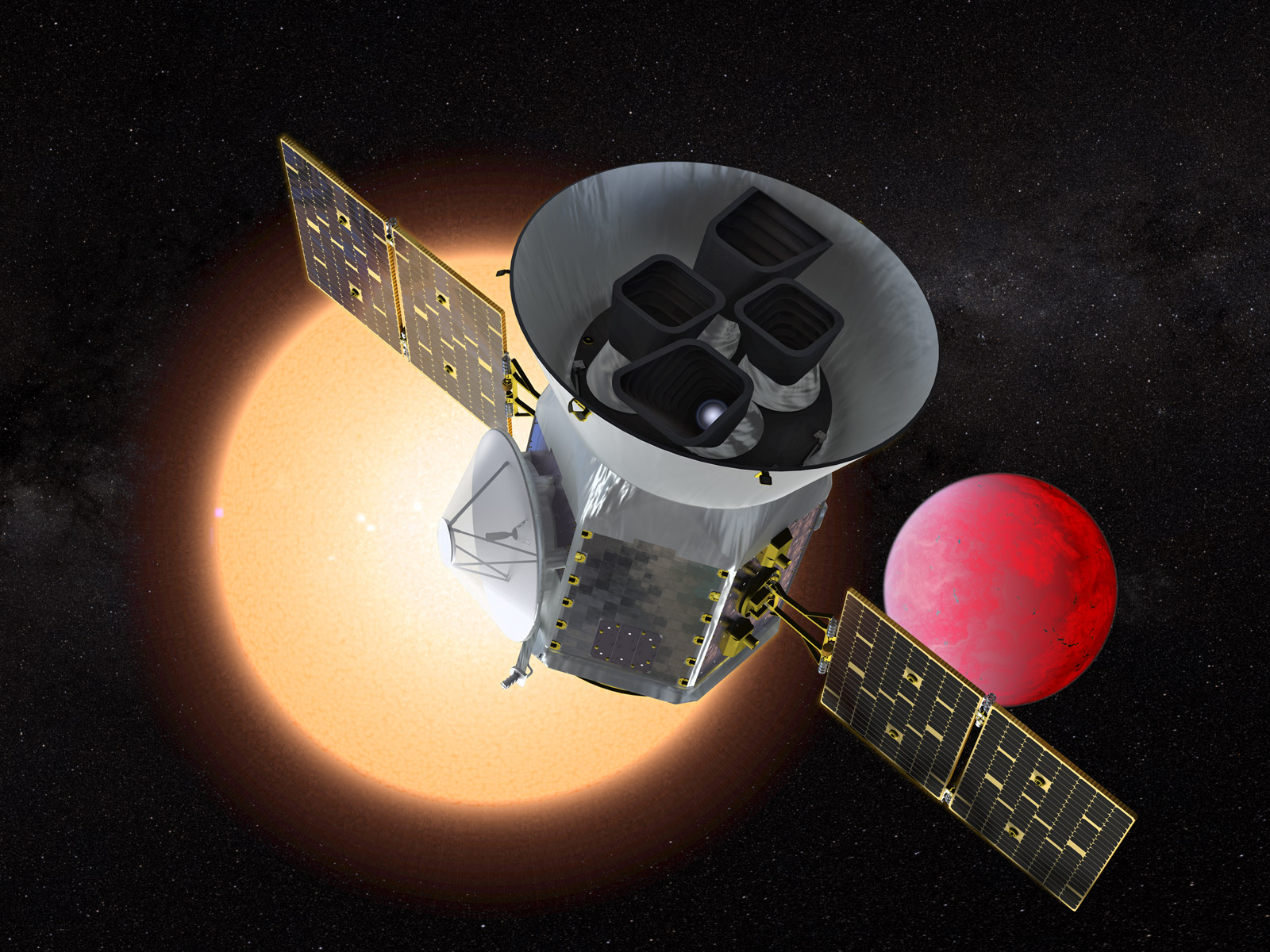NASA's TESS Exoplanet Hunter Goes Above and Beyond in Mission's 1st Year
The satellite has already found 24 confirmed exoplanets, a few of which may be habitable.

CAMBRIDGE, Mass. — NASA's newest planet hunter is one year older and 24 identified exoplanets wiser.
The team behind the Transiting Exoplanet Survey Satellite (TESS) held the mission's first annual science conference here this week, a year after the spacecraft began gathering data from Earth orbit.
On Monday (July 29), for example, the mission’s head researcher, George Ricker, gave the audience at the Massachusetts Institute of Technology (MIT) an update on TESS' progress since its April 2018 launch and the satellite’s future prospects as it begins to turn its focus toward the celestial Northern Hemisphere.
Related: NASA's TESS Exoplanet-Hunting Mission in Pictures
TESS' planet haul gets updated frequently, but according to NASA's Exoplanet Archive, the mission has already discovered 24 confirmed exoplanets and identified 993 potential alien worlds through data collection and analysis of observed exoplanet transits — in other words, by observing the telltale brightness dips exoplanets cause when crossing the faces of their host stars.
Ricker told Space.com later during the weeklong conference that these results have far exceeded the mission’s set goals at launch.
"The minimum thing we had to achieve for the mission in order to satisfy the fundamental scientific requirements that we were selected by NASA to fulfill was primarily based on making 2-minute cadences [observation intervals] of preselected stars," Ricker told Space.com.
Breaking space news, the latest updates on rocket launches, skywatching events and more!
In addition to satisfying that constraint, Ricker said, TESS has also observed other phenomena like supernovas and a "tidal disruption event" — that is, a star being "shredded" by a black hole. But, while those kinds of events are unpredictable, Ricker said we can expect many more consistent exoplanet discoveries from TESS in the future.
"There’s only the beginnings of a set of [exo]planets," Ricker continued. "We didn’t expect in the first two-year primary mission to find more than a handful of those. That number as we move into the extended mission will almost triple."
Only a small percentage of these observed and confirmed exoplanets will fall into the coveted habitable zone, the sweet spot in exoplanet orbits that allows them to maintain liquid water on their surfaces. But mission researchers have already identified several systems that may qualify. In particular, two exoplanet systems announced during the conference — GJ 357 and TOI-270 — may be capable of supporting life as we know it.
The discovery of these habitable-zone exoplanets will help future missions aimed at researching exoplanet atmospheres target their search, Ricker said — especially NASA's $8.9 billion James Webb Space Telescope, which is scheduled to launch in 2021.
"The other fundamental idea behind TESS was, we wanted to make sure that we could survey the entire solar neighborhood and find the systems that are close enough [so] that their host stars are bright enough," Ricker told Space.com. "That would really pave the way for the James Webb Telescope to make the kind of discoveries it’s capable of, if [it] knows where to look."
As TESS continues into its second year, Ricker said he’s hopeful that the mission will have a long life and continue advancing the discovery of not only new exoplanets but also the democratized understanding of their compositions and evolution, through diverse follow-up studies conducted by telescopes both in space and on the ground.
And this goal benefits from the extensive collaboration practiced by this international community of researchers, said Patricia Boyd, head of the Exoplanets and Stellar Astrophysics Laboratory at NASA's Goddard Space Flight Center in Greenbelt, Maryland.
"No one group, no one country, no one science agency can do it all," Boyd told Space.com. "We are much more powerful when we can combine all our forces."
"The collaborative spirit of K2 has drifted over into TESS in a wonderful, natural way," she added, referring to the extended mission of NASA's pioneering Kepler space telescope.
- The Strangest Alien Planets (Gallery)
- 10 Exoplanets That Could Host Alien Life
- TESS: NASA's Search for Earth-Like Planets
Follow us on Twitter @Spacedotcom or Facebook.

Sarah is a D.C.-based independent science journalist interested in the philosophical questions of science and technology and how research intersects with our daily lives. Her work has appeared in Popular Mechanics, IEEE Spectrum, Inverse, and Nature, among other outlets, and covers topics ranging from AI to particle physics and space travel. She has a master's degree in science journalism from Boston University.
